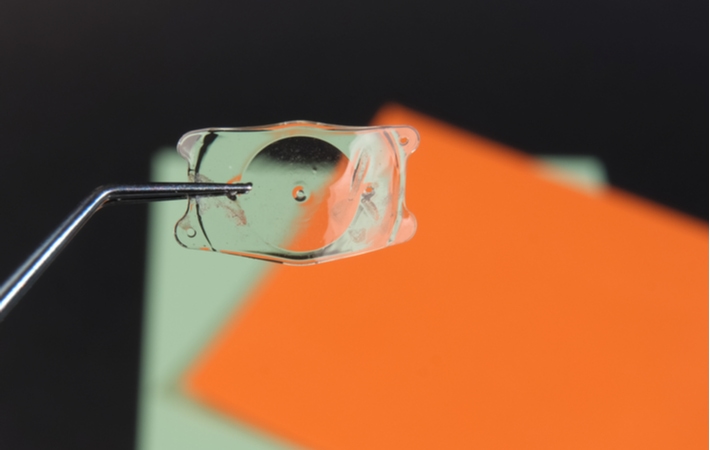Vision Correction Beyond LASIK
20/20 vision can be a marvelous thing. Imagine getting out of bed without needing to slip on glasses or pop in contact lenses to see. Many patients choose refractive surgery for the freedom from corrective lenses.
LASIK can be a good fit for some patients seeking vision correction. But LASIK isn’t the only eye surgery for enhancing vision. You may benefit from other surgical options when your cornea is too thin for LASIK.
Why Cornea Thickness Matters for LASIK
When most people think of laser eye surgery or refractive surgery, they think of LASIK (laser in-situ keratomileusis). While LASIK has advantages and disadvantages, not every patient is a good candidate.
One notable disqualifier is cornea thickness. The cornea is the transparent front surface of the eye. It covers the iris (coloured part of the eye) and the pupil (the eye’s opening). The cornea bends light, and acts as a powerful lens, helping to focus light correctly.
When the cornea shape is abnormal, it can change how light is focused, causing refractive errors. Examples of refractive errors include:
- Astigmatism: the cornea is irregularly shaped
- Myopia (nearsightedness): the cornea may have too much curvature
- Hyperopia (farsightedness): the cornea may have too little slight curvature
LASIK surgically reshapes the cornea to correct the curvature or shape. During the LASIK procedure, a surgeon cuts a flap in the outer cornea. Then, a computer-guided laser removes inner cornea tissue. Finally, the flap is returned to the correct position, with initial healing typically lasting a few days. However, in some cases, iit may take 3 months and sometimes longer for vision to stabilize.
To successfully create the cornea flap, patients must have a certain amount of thickness. If LASIK is performed on a cornea that is too thin, vision changes can occur over time. The cornea can destabilize and begin to change shape slowly or rapidly, leading to corneal ectasia. Other treatments such as corneal cross-linking or corneal transplantation may be needed to halt or repair cornea ectasia.
When your surgeon assesses your eyes, they may determine your corneas are too thin to perform LASIK safely. However, there are alternatives, including LASIK’s predecessor.
PRK
PRK (photorefractive keratectomy) has been around longer than LASIK. Similar to LASIK, PRK uses a laser to reshape the cornea. However, instead of cutting a flap in the outer cornea, surgeons remove only a thin amount of the top layer which consists of skin or epithelium. Then, a computer-guided laser reshapes the cornea tissue underneath.
PRK and LASIK have similarly high rates of success. About 90–95% of people achieve 20/40 vision or better. However, the initial healing is typically longer for PRK, typically lasting one week. Patients may also feel more discomfort during recovery.
One benefit of PRK over LASIK is that there is no risk of flap complications. PRK is generally considered a safe procedure. But, like any surgery, there are potential risks, including:
- Double vision
- Glare or halos at night
- Regression (decreased vision)
- Dry Eye
Your eye care team can assess your eye health and determine if PRK may benefit you.

ICL
ICL (implantable collamer lens) surgery uses an artificial lens to correct refractive errors. The surgery uses a phakic lens. Instead of removing tissue or replacing the eye’s natural lens, the ICL is inserted through a small incision. Recovery is generally quick, as no tissue is removed.
Although the implanted lens is intended to be permanent, it can be removed. For example, if your vision changes, you may benefit from changing the lens to a higher prescription.
Cornea thickness isn’t required for candidacy, and ICL surgery can correct even severe myopia. Additionally, there’s a decreased risk of chronic dry eye—a common symptom of LASIK and PRK.
There are some rare risks to ICL surgery. For example, the artificial lens can decrease fluid circulation within the eye. The limited circulation can cause inflammation or increased eye pressure, increasing the risk of early cataracts and glaucoma. However, the newer ICL EVO models have greatly decreased this possible complication. Therefore, regular follow-up visits with your eye care team are essential for monitoring recovery and long-term eye health.
RLE
Refractive lens exchange (RLE) is similar to cataract surgery, as a surgeon replaces your natural lens with an artificial lens. The replacement lens or intraocular lens (IOL) can be customized for your vision needs. Some IOL types include:
- Monofocal IOLs are standard IOLs that can help improve your vision or reduce your reliance on glasses or contact lenses.
- Aspheric IOLs can help reduce glare and enhance vision quality.
- Extended vision IOLs contain dual focusing powers to correct vision offer distance and computer vision
- Multifocal IOLs contain multiple focusing powers to correct vision for multiple distances.
- Toric IOLs have unique design features to correct astigmatism.
RLE can sometimes be a better option than LASIK, PRK or ICL refractive surgery for people with high hyperopia (farsightedness) or presbyopia.
As the surgeries share the same procedure, RLE shares the same risks as cataract surgery, including:
- Eye infections
- Glaucoma
- Retinal detachment
There are pros and cons to refractive lens exchange. Therefore, a consultation with an ophthalmologist helps patients prepare. In addition, your eye care team can evaluate eye health, vision goals, and lifestyle to determine if you’re a good candidate for RLE.
What’s Best for You?
Many alternatives to LASIK are available, but what’s the best option for you? A consultation with an eye care professional can help you determine the best possible solution for your unique vision needs.
When you’re considering refractive surgery, Vector Eye Centre can help answer your questions. One of our ophthalmologists can discuss your lifestyle and vision needs to determine the most appropriate procedure for you. We look forward to helping you achieve clear vision. Contact us today for a consultation!



